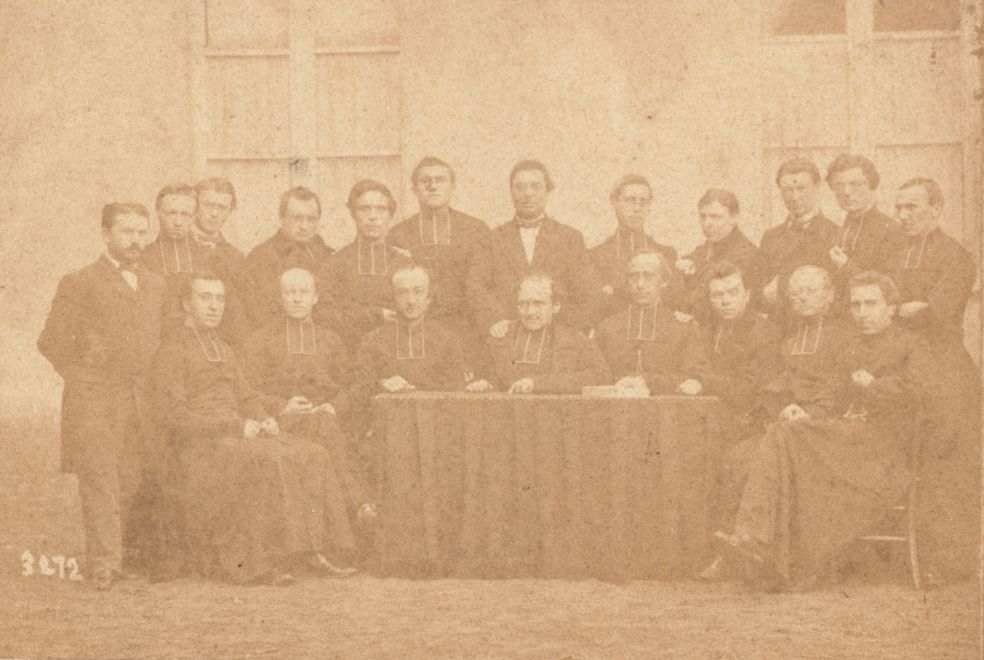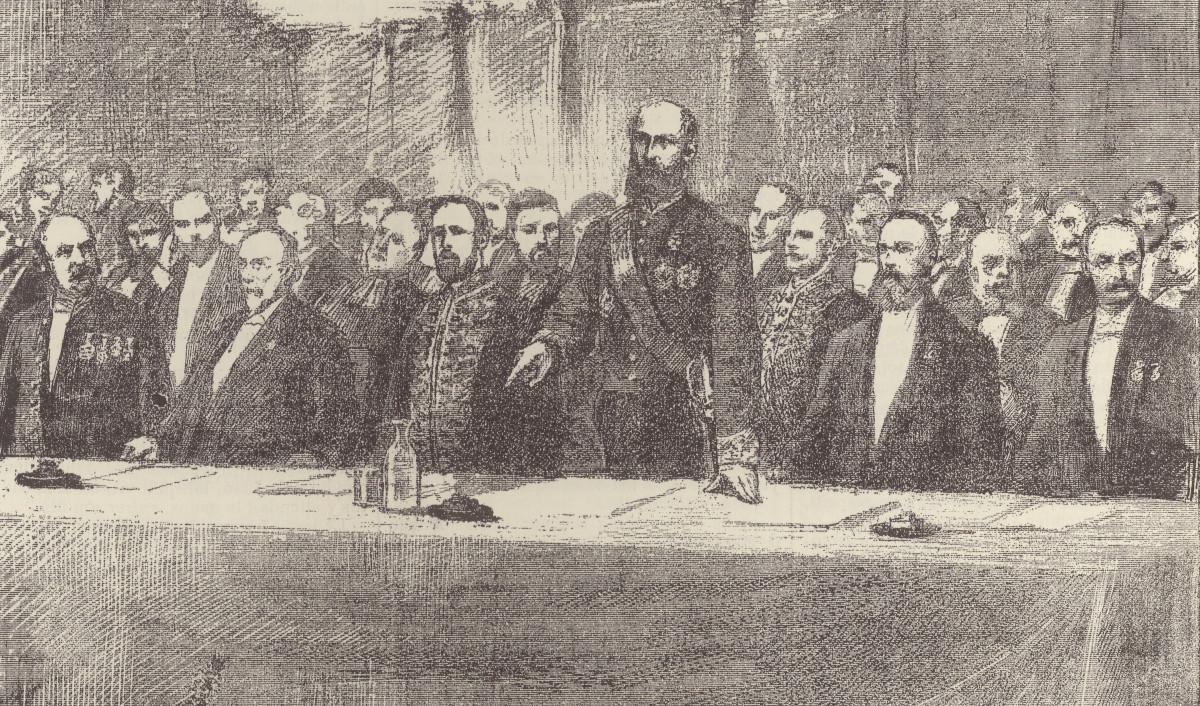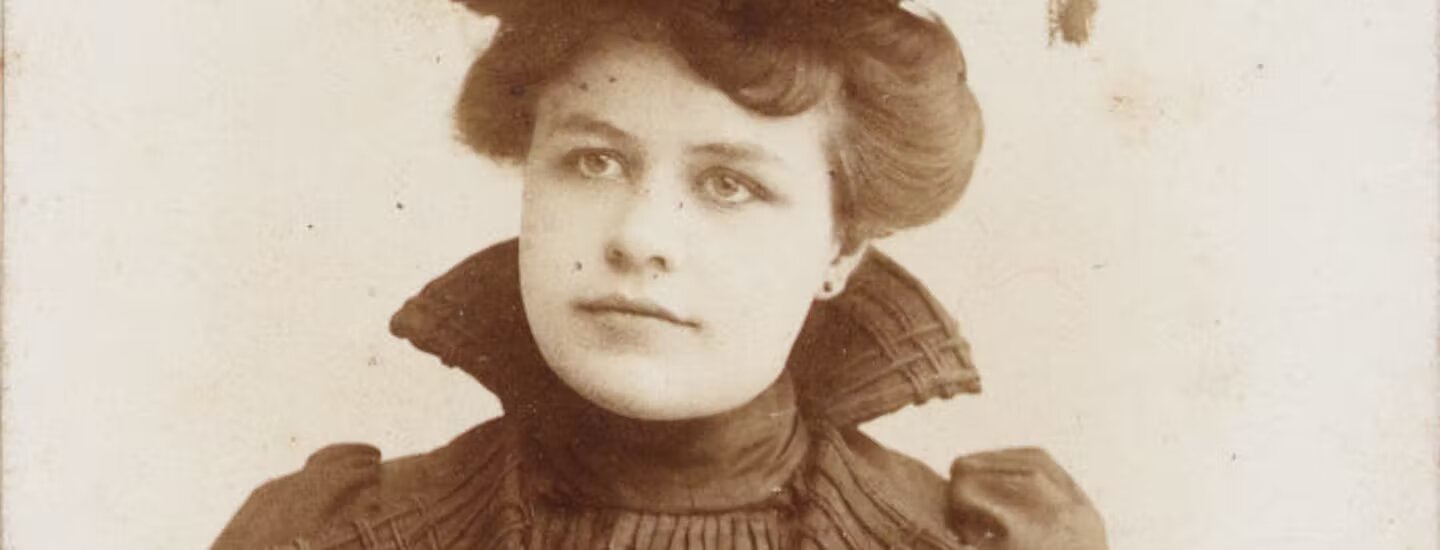The enormous collection of Gezelle’s letters constitutes a fundamental part of the Guido Gezelle Archives of the Public Library Bruges. The collection consists of about 7000 letters addressed to Gezelle and about 600 written by the poet himself. Outside this collection, a number of letters are in private possession or located in other institutions. Yet other letters, whose location is unknown, are only available in the form of a publication or a copy. The edition will include all these letters.
Gezelle often considered these letters as mere tools. He used the texts for articles in his magazines, wrote poetry on them, or cut them up into index cards for linguistic notes. Based on the handwriting, contents, paper, ink, and watermark of these fragments, a number of letters were reconstructed by the Gezelle Archives, the University of Antwerp, and within this edition project. This has uncovered some hitherto unknown materials.
The letters give an insight into the life and work of one of the most important writers in the canon of Dutch literature. Moreover, the correspondence is of great value for the study of 19th-century religious life, education, press, linguistics, folklore, and mentality history.
Find out more about Gezelle’s letters at gezelle.be.
The digital edition project of the entire Gezelle correspondence is divided over several subprojects.



Scholars from different backgrounds are sharing their knowledge for this project. Four partners have joined forces:
Find out more about the participation project at gezelle.be.
Meet the volunteers at gezelle.be.
For letters kept in other repositories, the following partner institutions kindly offered support or provided digital facsimiles:
Within the digital edition, every letter is a consultable document of its own. The title line at the top of each letter shows the date and place of sending, and names of the sender and recipient. These data are found in the catalogue of the Guido Gezelle Archives.
In order to preserve the source’s historical character, the letters were transcribed diplomatically, without line breaks or hyphenation marks and without the addition of corrections or normalizations. Illegible characters are being transcribed with “x”.
A diplomatic transcription can disturb the searchability of a digital correspondence edition. Therefore, normalizations and corrections were inserted into a separate encoding layer, allowing the edition to be searched for the normalized text. For the same reason, abbreviations were expanded in this encoding layer, too.
The transcriptions of the letters have been enriched with annotations, concerning:
Where necessary, annotations have been added, with bibliographical explanations and contents clarifications. We also clarify double use of letters (e.g., a letter with a hand-written poem on it).
In the underlying encoding of the letters the following metadata have been documented:
The volunteers are assigned various correspondents, whose letters they transcribe in a Word document. In order to reduce the risk of version conflicts, the transcriptions are being edited online and saved in the cloud (using the Microsoft OneDrive service). The editing process consists of three phases :
Subsequently, the Word transcriptions are being converted automatically into an XML format adhering to the Text Encoding Initiative (TEI) standard. The diacritical notation system is parsed and transformed into the corresponding TEI elements. In the process, the metadata are collected from the library catalogue and added to the letters. Each letter is thus transformed into a separate TEI document, including both a complete meta-description and the edited transcription. Also, the spreadsheets containing the register information are transformed into separate TEI documents.
Finally, the structured TEI documents are being indexed in an XML database that uses this internal structure for detailed search queries in the edition. In the edition, the different text layers in the transcription are presented in different styles (see sectie 9).
The letters in the digital edition are being presented using global style sheets. The rich XML encoding allows for the definition of different rendition styles. The characteristics of these different styles will be summarized first. Next, a detailed overview is given for the different textual phenomena that have been marked in the transcription, and their presentation in the different rendition styles.
| textual phenomena | reading text | clean reading text | diplomatic | diacritical | text encoding |
|---|---|---|---|---|---|
| authorial addition (“a” added by the writer of the letter) |
a | a | <+a> |
<add>a</add> |
|
| authorial deletions (“a” deleted by the writer of the letter) |
<-a> |
<del>a</del> |
|||
| editorial addition (“a” added by a later reader, identified with code ID) |
a | <+#ID#a> |
<add hand="#ID">a</add> |
||
| editorial deletion (“a” deleted by a later reader, identified with code ID) |
a | a | a | <-#ID#a> |
<del hand="#ID">a</del> |
| linguistic annotation (“a” added as linguistic annotation by a later reader, identified with code ID) |
[Taalkundige notitie] a | <*+#ID#a> |
<note type="annotation" hand="#ID"> <add hand="#ID" type="annotation">a</add> </note> |
||
| substitution (“a” deleted and replaced with “b” by the writer of the letter) |
b | b | {<-a><+b>} |
<subst> <del>a</del> <add>b</add> </subst> |
|
| line break [1] | (s) [2] | (s) | (s) | // |
<lb/> |
| textual phenomena | reading text | clean reading text | diplomatic | diacritical | text encoding |
|---|---|---|---|---|---|
| illegible text [3] | Xxxx | Xxxx | [Xxxx] |
<gap reason="illegible" n="Xxxx"/> |
|
| line-spanning illegible text | xxx...xxx | xxx...xxx | [xxx...xxx] |
<gap reason="illegible" n="xxx...xxx"/> |
|
| uncertain transcription (“a” is unclear to the editor) |
a | a | a | [?a] |
<unclear>a</unclear> |
| hesitation between uncertain readings (the editor is uncertain whether the text reads “a” or “b”) |
a/b | a | a | {[?a][?b]} |
<choice> <unclear>a</unclear> <unclear>b</unclear> </choice> |
| fragment | … | … | […] |
<gap reason="fragment" n="…"/> |
|
| damaged fragment | x | x | [:x] |
<gap reason="damage" n="…"/> |
|
| editorial addition (“a” added by the editor) |
a | a | [+a] |
<supplied>a</supplied> |
|
| uncertain editorial addition (“a” added by the editor, who is indicating uncertainty) |
a | a | [?+a] |
<supplied cert="low">a</supplied> |
|
| editorial addition of missing text (missing text reconstructed by the editor as “a”) |
a | a | [:+a] |
<supplied reason="damage">a</supplied> |
|
| uncertain editorial addition of missing text (missing text reconstructed by the editor as “a”, with indication of uncertainty) |
a | a | [:?+a] |
<supplied reason="damage" cert="low">a</supplied> |
|
| editorial correction (“a” in the original, corrected as “b” by the editor) |
b | b | a | {[-a][+b]} |
<choice> <sic>a</sic> <corr>b</corr> </choice> |
| expansion of abbreviation (“a” in the original, expanded as “abc” by the editor) |
abc | abc | a | {<=a>[=abc]} |
<choice> <abbr>a</abbr> <expan>abc</expan> </choice> |